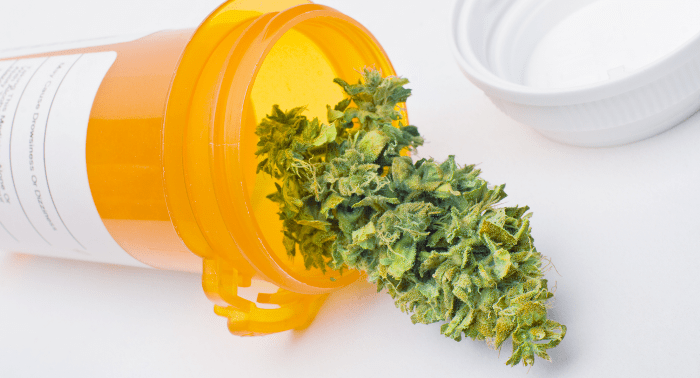Medical Marijuana
Medical Marijuana, Not Just An Average Herb
Medical Marijuana’s Historical Timeline Stretches Back Over 4750 Years
Although medical cannabis is relatively recent in the western word, in 2737 BC the Chinese Emperor Shen Nong authored a medical book including cannabis as a treatment for constipation, rheumatism and absent-mindedness.
In the second century, ancient Egyptians are believed to have used cannabis in their recipe for cancer therapy. Ancient Greeks used cannabis to treat their horse’s battle wounds. They also used the plant’s medical properties to treat human ailments such as ear pain and inflammation.
Marijuana was introduced into western medicine in 1830 by Irish physician William Brooke O’Shaughnessy. After studying the medical benefits of marijuana during a trip to India, he introduced cannabis to English physicians. Cannabis was used to treat a wide variety of conditions, including muscle spasms, rheumatism, epilepsy and pain. As the effectiveness of cannabis treatments were published, cannabis-based medicines spread across the western world. The Name “indica” refers to Indian cannabis. In 1785 Jean-Baptiste Lamarck noticed a difference in the Indian grown cannabis and that of the cannabis grown throughout Europe. The European variety was known as Cannabis sativa. Lamark classified this species different and gave it the name cannabis indica.
Medical Marijuana and Canadian Legislation
In July of 2001, Health Canada introduced legislation allowing for sick Canadians to access marijuana as a medicine. Currently hundreds of thousands of Canadians use marijuana to treat a wide spectrum of medical conditions, from depression to cancer. Prime Minister Justin Trudeau and the liberal government have promised to legalize Marijuana by July 2018, not only for medical purposes but for every adult, above 18 years of age to enjoy recreationally.
The Plants Medicinal Components
Cannabis is primarily used for the two most famous medical components of cannabis, tetrahydrocannabinol (THC) and cannabidiol (CBD). These are just two of the over 60 active medical compounds found in the cannabis plant. In 1964 Israeli scientist Dr. Raphael Mechoulam was the first to isolate THC from the cannabis plant, his groundbreaking work opened the doors for modern cannabis research and earned him many awards including NIDA discovery award in 2011.
THC has been legally prescribed in the United States for decades. The first THC-based pharmaceutical pill (dronabinol) was developed by Unimed Pharmaceuticals with the funding and support of the National Cancer Institute. This synthetically derived THC was approved by the FDA for treatment of chemotherapy related nausea and vomiting. Today the pharmaceutical industry has isolated many other derivatives from the cannabis plant with many other applications.
THC has been proven to protect brain cells and stimulate their growth. THC has been scientifically proven to have many positive on brain cells.
Marijuana possesses major differences from other drugs
The majority of recreational drugs are considered neurotoxins, but THC is a neuroprotectant. Neuroprotectants protect the brain cells from inflammation and against oxidation. A study done in 2005 by the University of Saskatoon was the first to discover that THC promotes the growth of brain cells through a process known as neurogenesis. The lead author of the study, Dr. Xia Zhang stated in an interview with Science Daily that “most drugs of abuse suppress neurogenesis, where marijuana promotes neurogenesis (brain cell growth)”
Chemicals like THC are found in the human body. In 1992, Dr. Mechoulam, (the first person known to isolate THC) made another groundbreaking discovery by the detection of anandamide in humans. Anandamide is a naturally occurring cannabinoid produced in the brain. In the same way opioids work, by mimicking their natural endorphins, chemicals in cannabis mimic naturally occurring cannabinoids (endocannabinoids). Both THC and the naturally occurring anandamide act on the same cannabinoid receptors in the brain. They regulate mood, appetite, memory, and sleep.
THC does not always produce a high. THC is famous for its ability to induce a state of euphoria. However, THC does not always do this on its own. In the plant THC is mostly available as THCA (tetrahydrocannabinol acid), its acidic precursor. THCA is not psychoactive, therefore consuming raw cannabis does not induce the “state of euphoria” that smoked cannabis does. Many medical users enjoy taking raw cannabis, because they receive the medical benefits without the psychoactive effect. THCA is converted to THC when exposed to heat. This process is called decarboxylation, or “decarbing”. This is the process that many medical and recreational cannabis users enjoy. Not only are they receiving the therapeutic benefits of cannabis, they are also enjoying a state of euphoria.
Today cannabis is receiving significant interest in cancer therapy among other life threatening diseases
Treating a wide range of medical ailments, medical marijuana is used for pain management, to improve appetite, suppress nausea and epilepsy, combat the effects of chemotherapy, assist in cancer treatments, fight MS, HIV/AIDs, and help improve the quality of life for many other suffering patients.
These are just the few facts that make this plant such a rich and unique member of our planet.
Reference.
https://www.sciencedaily.com/releases/2005/10/051016083817.htm



